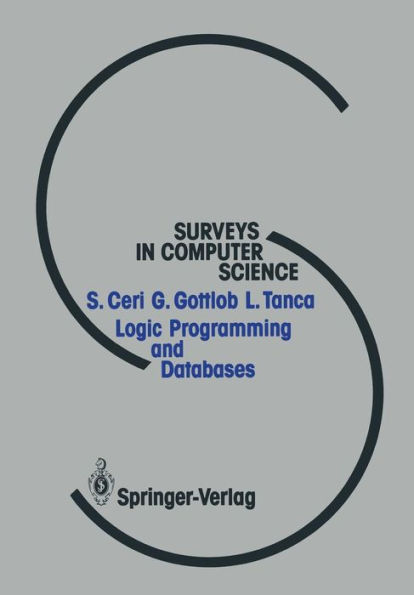Logic Programming and Databases
The topic of logic programming and databases. has gained increasing interest in recent years. Several events have marked the rapid evolution of this field: the selection, by the Japanese Fifth Generation Project, of Prolog and of the relational data model as the basis for the development of new machine archi tectures; the focusing of research in database theory on logic queries and on recursive query processing; and the pragmatic, application-oriented development of expert database systems and of knowledge-base systems. As a result, an enormous amount of work has been produced in the recent literature, coupled with the spontaneous growth of several advanced projects in this area. The goal of this book is to present a systematic overview of a rapidly evolving discipline, which is presently not described with the same approach in other books. We intend to introduce students and researchers to this new discipline; thus we use a plain, tutorial style, and complement the description of algorithms with examples and exercises. We attempt to achieve a balance between theoretical foundations and technological issues; thus we present a careful introduction to the new language Datalog, but we also focus on the efficient interfacing of logic programming formalisms (such as Prolog and Datalog) with large databases.
1116889632
Logic Programming and Databases
The topic of logic programming and databases. has gained increasing interest in recent years. Several events have marked the rapid evolution of this field: the selection, by the Japanese Fifth Generation Project, of Prolog and of the relational data model as the basis for the development of new machine archi tectures; the focusing of research in database theory on logic queries and on recursive query processing; and the pragmatic, application-oriented development of expert database systems and of knowledge-base systems. As a result, an enormous amount of work has been produced in the recent literature, coupled with the spontaneous growth of several advanced projects in this area. The goal of this book is to present a systematic overview of a rapidly evolving discipline, which is presently not described with the same approach in other books. We intend to introduce students and researchers to this new discipline; thus we use a plain, tutorial style, and complement the description of algorithms with examples and exercises. We attempt to achieve a balance between theoretical foundations and technological issues; thus we present a careful introduction to the new language Datalog, but we also focus on the efficient interfacing of logic programming formalisms (such as Prolog and Datalog) with large databases.
84.99
In Stock
5
1

Logic Programming and Databases
284
Logic Programming and Databases
284Paperback(Softcover reprint of the original 1st ed. 1990)
$84.99
84.99
In Stock

Product Details
| ISBN-13: | 9783642839542 |
|---|---|
| Publisher: | Springer Berlin Heidelberg |
| Publication date: | 12/15/2011 |
| Series: | Surveys in Computer Science |
| Edition description: | Softcover reprint of the original 1st ed. 1990 |
| Pages: | 284 |
| Product dimensions: | 6.69(w) x 9.53(h) x 0.03(d) |
From the B&N Reads Blog
